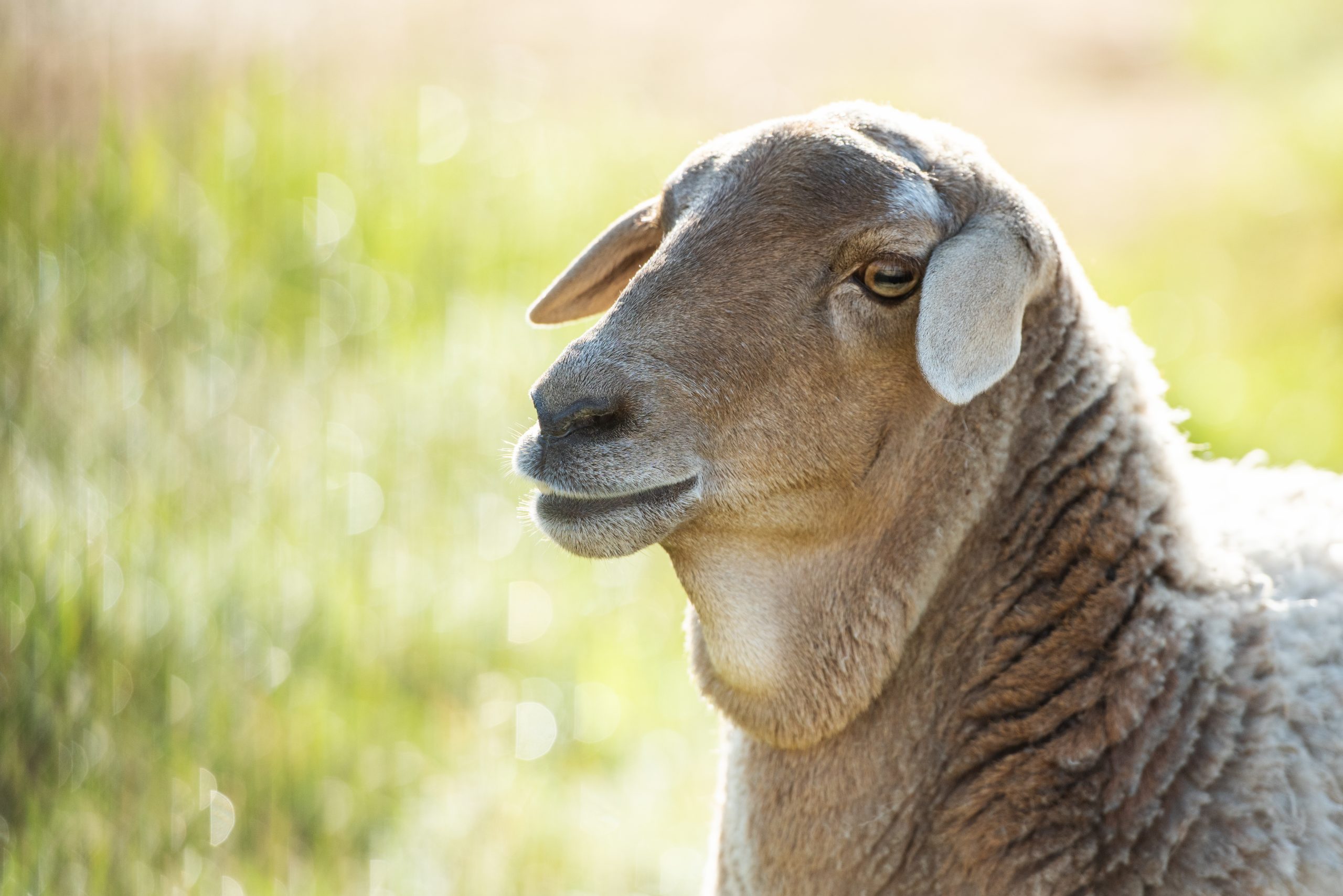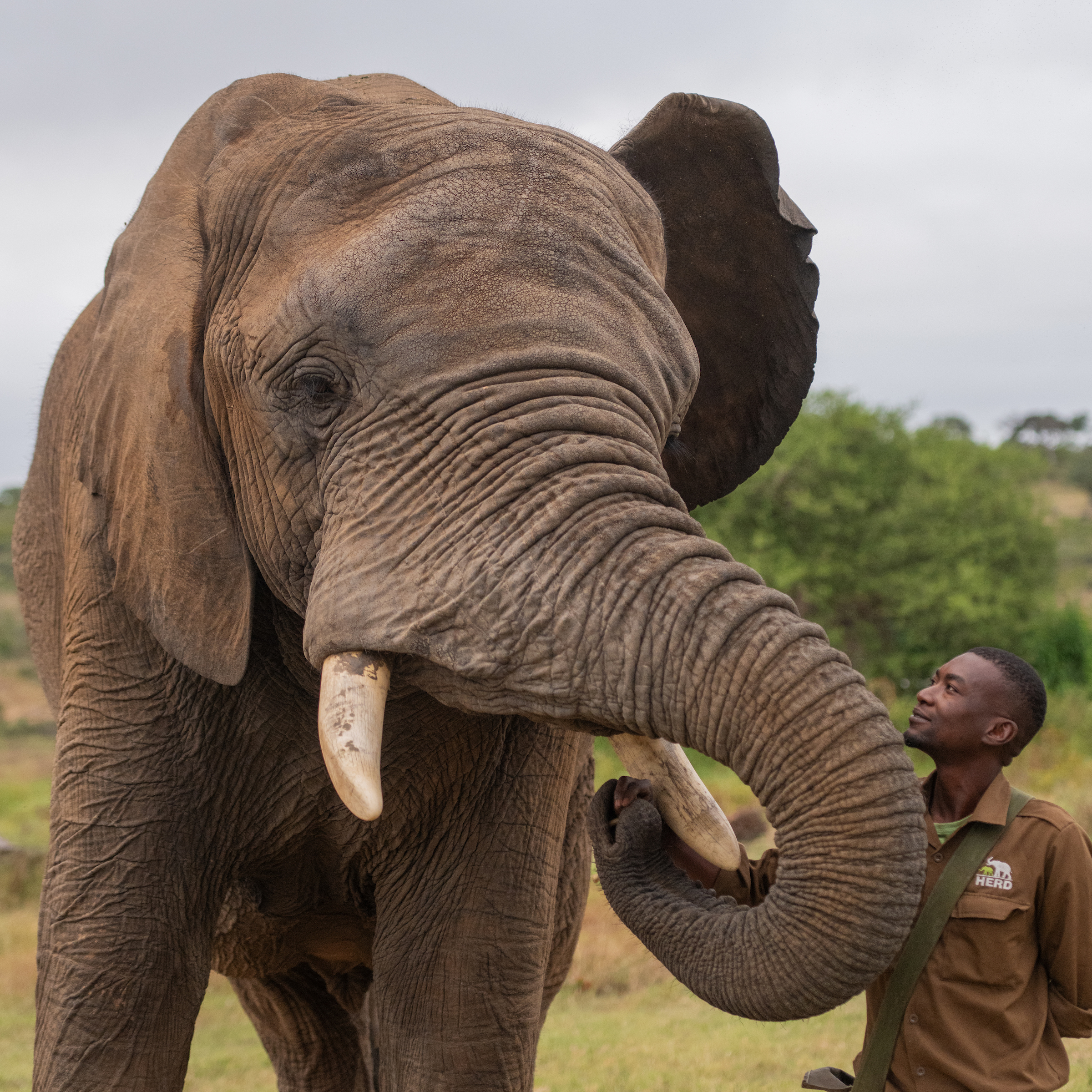The Interesting Interactions Between the Jabulani Herd & Wild Elephants
Jabulani herd Matriarch, Tokwe and the herd
We share our reserve, the Kapama Private Game Reserve in South Africa, with many animals.
Buffalo, giraffe, lion, leopard, hippo, impala, beautiful birdlife, elusive caracal and pangolin, and of course elephant… Both wild herds and the Jabulani herd of rescued elephants who have created a herd of their own. A very unique herd that exists harmoniously together, females and males, and that has accepted wild elephant orphans into their herd, as one of their own.
Since the Jabulani herd roam the reserve during the daylight hours each day, foraging, walking, swimming and bonding, they do on occasion come across the wild elephants.
Jabulani Ranger, Ruan says, “The wild elephants in the reserve are split up into two main groups and there is a third group of bulls. The smallest calf in the wild herd is less than two weeks old. Overall, the wild herds consist of about 55-60 elephants. There is a group of youngsters ranging from 2 weeks to 3 years of age.”
Sometimes, says Elephant Manager, Tigere, “the interaction between the wild herd and Jabulani herd can become tense, depending on the animal’s gender. All the females in the Jabulani herd have developed a loving instinct towards the other animals of the same species, as orphans themselves having formed a unique herd. Most of the Jabulani females are okay with the wild elephants, whether it’s a female or a male elephant.”
“Young Jabulani herd bull, Mambo loves to follow other young wild bulls but the problem is that the wild bulls and adult females don’t really tolerate strangers. They will mostly chase away young bulls from another herd. Even a dominant bull will also chase young bulls away,” says Tigere.
“We experienced this kind of behaviour when Mambo decided to join the wild herd and was chased away. For three nights, he was alone, following them, but from a fair distance until we found him alone as the wild herd kept walking away from him.”
The older males in the Jabulani herd react differently to the wild elephants. “There was a moment when older bull, Fishan chased a young wild bull elephant away. The elephants went crazy during this interaction, with blasts of trumpets heard all over. When everything was resolved, and the young bull left, things went back to normal.” Fishan as a now third ranking elephant in the herd is certainly effective in his dominance display.
In another occasion, “a young female wild elephant popped in among the Jabulani herd. There were a lot of rumbles, but the elephants were all calm as the wild female was standing next to Sebakwe, the dominant bull. The females were beside him too: Limpopo, Lundi and Khanyisa, Tokwe and Bubi. When we realised that there was a wild female elephant among the Jabulani herd we started calling them, but Sebakwe did not want to leave this young female alone, so some of the elephants started trumpeting and running around until we successfully separated them.”
It could have been in this case that Sebakwe was attempting to protect Khanyisa and the females and the herd showing signs to the interloper to move off.
Elephants are highly complex social beings, living in strong tight-knit families. The herd’s wellbeing and survival are integral to their every action and reaction. They’re not territorial in the way that lions, wild dogs, hippo or African fish eagles are, but elephants do clash with each other for different reasons, particularly when it comes to limited resources like water at a waterhole or mud- wallows. This is where rank and dominance come in.
Even though the Jabulani herd are rescued orphans and include both adult and young bulls and cows, their hierarchical structures are still in place and their behaviours very much wild and natural.
In a meeting between herds, or elephants within a herd, where there is for instance a threat, resources are limited, a bull is in musth, or a baby is among the females, a dominant elephant, often the larger ones, will often establish and display its dominance, and the subordinate, lower-ranking elephant will back off or wait its turn. Elephants can also become aggressive if ill, injured or harassed.
Elephants have strong individual characters, with some more temperamental, stable, solitary, friendly, nervous, confident, gentle or aggressive than others.
The behaviours involved in an interaction are diverse with a range of gestures employed to mean different things, just as with body language or interactions between people.
According to Elephant Voices, “Elephants react to threats or challenges in three different ways. Dominance or threat displays are designed to demonstrate the superior strength and social position of the individual. They may look towards the threat, spreading their ears out. ‘Standing tall’, they raise their head and tusks high. Head-shaking and trunk-swishing can also be seen. Elephants may run at the threat in a demonstration or real charge. Most charges are mock charges which are broken off before the target is reached. However if an attack is followed through, an elephant is quite capable of killing another elephant, other animals (including humans) or wrecking cars.”
Elephant expert, Caitlin O’Connell, author of Elephant Don: The Politics of a Pachyderm Posse, has researched and reported on the Don behaviour of elephants, especially at a waterhole, and even between elephants within one herd. The dominant bull in a male herd is given certain privileges, like the first or best spot at the waterhole, with the other subordinate underlings giving him right of way. Elephants are definitely not exempt from politics.
“When you see elephants behaving terribly to each other, it’s also a reminder. Humans can treat each other terribly, too. But can’t we rise above that? We’re not so driven by our environment that we are competing for resources in the same way. It’s a reminder to look in the mirror —and try to be better,” says Caitlin.
Politics and hierarchy rule herd interactions. But within the herd, what is also pivotal is community, socialising, support, care, and loyalty, the qualities that strengthen the cohesiveness and closeness of the herd. As much as they may be aggressive when needed, elephants are also capable, like humans, of great compassion and empathy.
Discover more:
https://www.youtube.com/watch?v=VXHRtoH0kIQ
https://www.nationalgeographic.com/news/2015/04/150419-ngbooktalk-elephant-behavior-rituals-animals-africa/#close
https://www.researchgate.net/publication/263654219_Signals_gestures_and_behaviors_of_African_elephants





No comments yet.